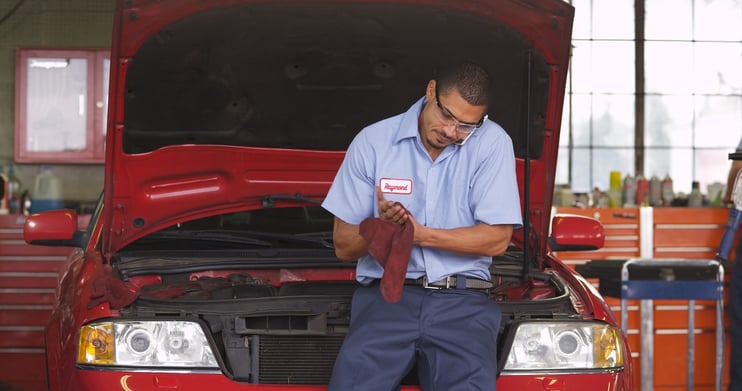 A study by repair data provider “CarMD” called the “2017 Vehicle Health Index” looked at average auto repair costs in 2016, and found that costs rose almost 3% last year and in 2015 too. The average repair bill for routine maintenance is $398. This is for minor repairs, not crash damage. The index (published April 2017) has 5.3 million repairs in its database, so I would guess it is a pretty comprehensive and reliable source.
A study by repair data provider “CarMD” called the “2017 Vehicle Health Index” looked at average auto repair costs in 2016, and found that costs rose almost 3% last year and in 2015 too. The average repair bill for routine maintenance is $398. This is for minor repairs, not crash damage. The index (published April 2017) has 5.3 million repairs in its database, so I would guess it is a pretty comprehensive and reliable source.
It turns out that there are five common repairs. The most common is a faulty oxygen sensor (8% of repairs). Next up is the catalytic converter (6.75%), followed by faulty ignition coils and spark plugs (6.23%). Amazingly, a loose gas cap was responsible for 4.16% of the “check engine lights, and the last one was a non-functioning mass airflow sensor (3.84%).
I collect and restore old cars, so I am very familiar with these things, and have experienced all five of them personally in the last year. Since I have a garage full of old Alfas, Jaguars, Citroens, etc., these five things are the least of my worries. I normally have to contend with a seized piston, bent camshaft, fried computer, bent frame, body or interior damage, well, you get the picture.
In one case, I restored a Citroen-Maserati which had an under-hood fire. This melted the aluminum hood and cracked the windshield, and cooked everything rubber and plastic in the engine compartment (parts made out of unobtainium, even 20 years ago) — remind me never to do this again.
Since I have no mechanical ability, I am not allowed near any power tools, and if I tried to fix something myself, I would likely break something far more expensive and complicated in the process.
Were Older Cars More Reliable?
Sometimes people ask me if older cars were more reliable. They certainly were a lot cheaper to buy and repair. Well, you might be surprised to learn that the average age of cars on the road in America is 11.6 years, and the average age of the vehicles in the repair database is 11.9 years! That is a pretty good testament to the quality of design and manufacture of modern cars. Back in the fifties and sixties, cars were scrapped when they were only seven or eight years old, and well before they reached 100,000 miles. Tires lasted 10,000 miles and exhaust systems had to be replaced every five years. Today, you can get a full purchase bank loan at 4% on a five-year-old car with 100,000 miles! Exhaust systems last almost forever and tires last 50,000 miles. When is the last time you had to fix a flat tire?
Probably the biggest difference with modern cars and older cars is the onboard computer, which coincided with the emergence of the Environmental Protection Agency in the 1970s. The EPA mandated standards for tailpipe emissions, and manufacturers had to use electronic controls to manage fuel injection systems (such as spark plug firing and fuel/air mixture) which cleaned up the air remarkably well. But it also increased the cost. Edmunds.com reports that a new Toyota Corolla cost $1700 in 1968 and today would cost $18,500. Of course, to a true car collector, this is an appliance, not an automobile!
Now, the good news is that the onboard computer has made diagnosing a problem a lot easier. During the 1980s, the Society of Automotive Engineers (SAE) established a universal system called the “Onboard Diagnostic System,” aka “OBD 2.” This became mandatory for manufacturers in 1996. I bought an OBD 2 reader last year (less than $100) and it was very helpful in diagnosing a problem (a leaking valve cover gasket causing oil to puddle in a spark plug hole). With a “modern” car, you just plug in the reader to a connection below the dashboard, and you will get a code, which can be cross-referenced with a handbook of codes and their meanings.
Another thing to consider is the sheer complexity of modern vehicles. The average new car today has 30,000 parts. There are between 50 and 100 computers, controlling the engine management, steering, acceleration, brakes, airbags, air conditioning, in-car displays, locks, and infotainment systems. A modern car uses 100 million lines of computer code. Compare this to the 12 million lines of code that power the Android operating system.
Things are about to get a whole lot more complicated. Up until now, the manufacturers have built their own infotainment systems, but now they have embraced Apple and Google for their connected car platform. It turns out that using Siri comes quite naturally when you are driving down the road and don’t want to take your eyes of the road to look at your phone.
And then there is the promise of self-driving cars. This will require even more comprehensive computer power. Now personally, I don’t see “autonomous” cars being readily available, or even usable from a practical standpoint (except in densely populated areas as an alternative to public transportation) for quite some time.
And there is one other point I would like to make. When the computers on modern cars start to fail, as they inevitably will, it will be very tricky and expensive to diagnose and fix the problem. Electronics just don’t like heat, and a car interior is a heat sink during the summer, particularly in the southern part of the country where ambient temperatures of a car parked in the hot sun can reach 130 to 170 degrees for extended periods of time, such as when you park your car at the airport.
CrossCheck plays a vital role in helping drivers of all cars, old or modern, maintain their cars. Here’s why.
Paying for a Major Auto Repair
The cost of an automatic transmission repair is somewhere between $1800 and $3500. It could be more if it is a modern “sealed for life” unit. The cost of buying a remanufactured engine is between $2250 and $4000, and that doesn’t include taking out the old one and putting in the new one. The simple truth is that most Americans just don’t have the money to pay for these kinds of repairs right now. A new survey by AAA shows that 64 million Americans would not be able to pay for an unexpected auto repair without going into debt. According to AAA, the average repair bill can set the driver back up to $600. And according to a separate AAA survey, a third of all U.S. drivers skip or delay recommended services or repairs, which increases the likelihood of unexpected mechanical failures and roadside breakdowns. As an aside, last year AAA responded to nearly 32 million stranded motorists!
Here is a quote from John Nielsen, AAA’s managing director of Automotive Engineering and Repair. “To avoid a surprise down the road, drivers should budget for monthly payments, insurance premiums, fuel costs, and the inevitable expenses of routine maintenance and repair. … The average cost of owning and operating a vehicle is more than $8500 a year, and AAA has found that millions of Americans are failing to set aside a car care fund to pay for the upkeep of their cars.”
In many cases, drivers will just borrow the money they need from their credit card line, or go to a high cost finance company lender. They will end up paying around 20% on a debt that will never go away. This is called a debt trap. But CrossCheck offers the consumer a better solution.
We have found that if we give the consumer an extra 30 days to come up with the money, they can usually do it. Multiple Check, the CrossCheck solution, does not require the consumer to apply for credit or pay interest. The merchant pays a nominal rate to make this happen and gets to make an additional sale at the same time.
If you are a car dealer with an auto repair facility, or transmission shop, body shop, or repair garage, download our free guide to Multiple Check because your customers need this solution.



